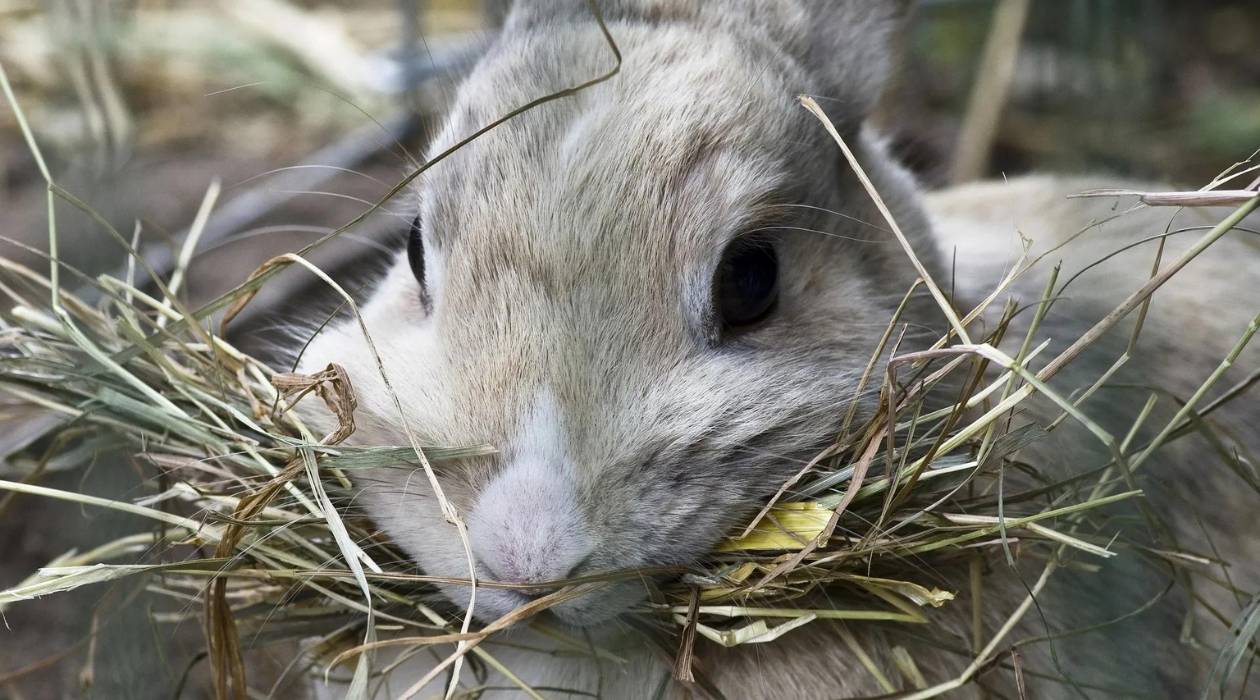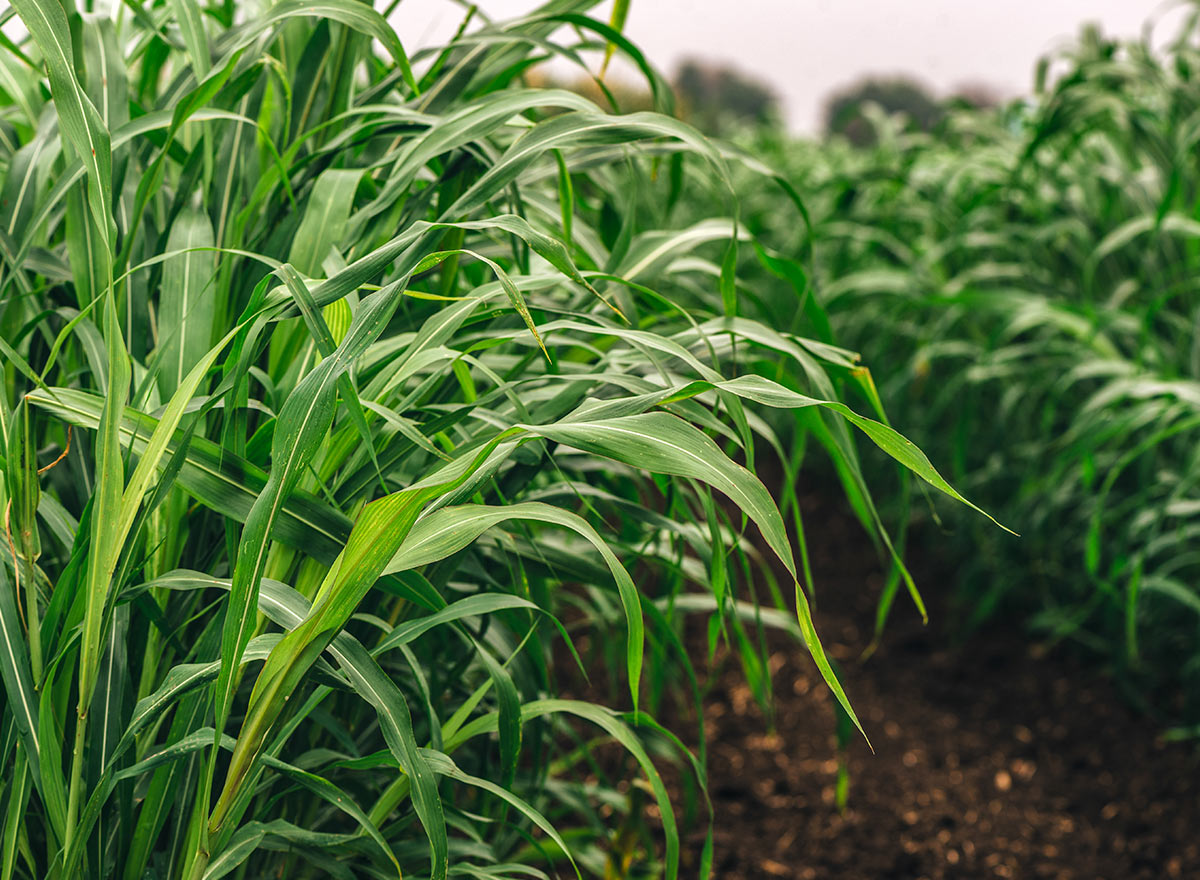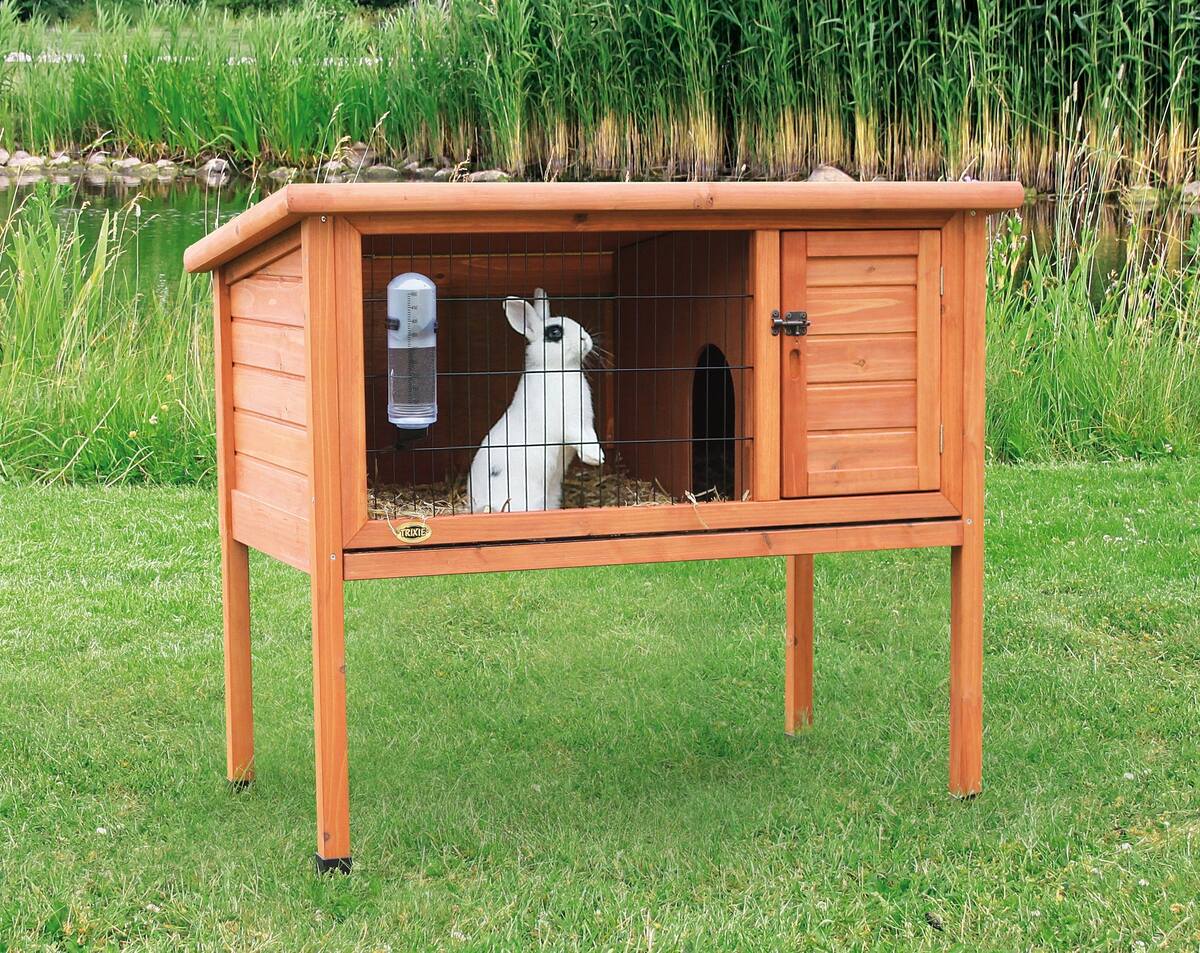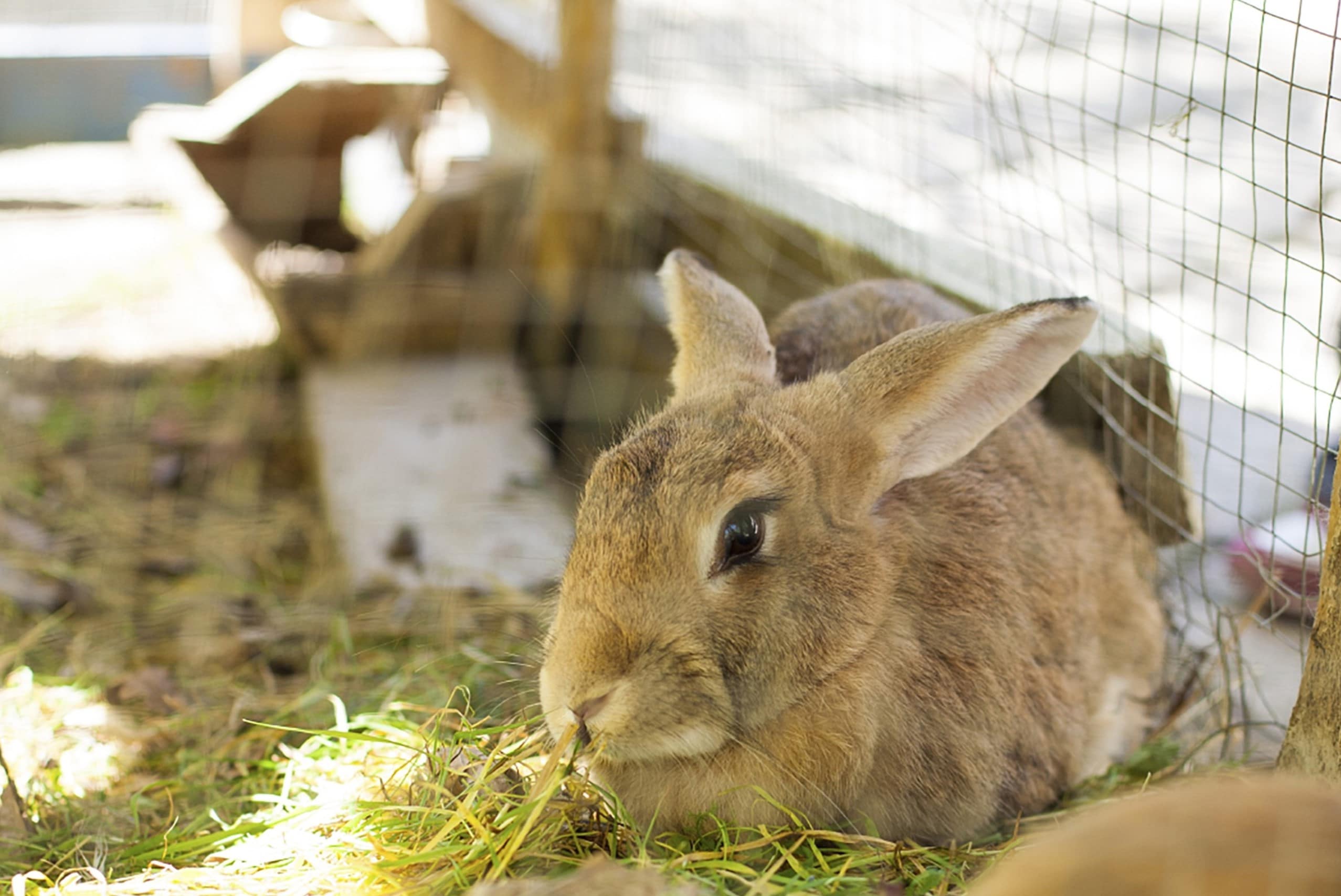

Articles
How To Store Hay For Rabbits
Modified: March 26, 2024
Learn the best way to store hay for rabbits in this informative article. Find tips and techniques to keep your rabbits' hay fresh and preserved for longer periods.
(Many of the links in this article redirect to a specific reviewed product. Your purchase of these products through affiliate links helps to generate commission for Storables.com, at no extra cost. Learn more)
Introduction
Proper hay storage is crucial when it comes to keeping rabbits healthy and ensuring a constant supply of fresh, nutritious food. Hay is a staple in a rabbit’s diet, providing essential fiber and promoting healthy digestion. However, if hay is not stored correctly, it can become moldy, dusty, or lose its nutritional value, potentially causing harm to rabbits.
In this article, we will discuss the importance of proper hay storage for rabbits and provide you with tips and techniques to ensure your hay remains fresh and of high quality. Whether you are a rabbit owner or a farmer, these guidelines will help you maintain the potency of hay and keep your rabbits happy and healthy.
Key Takeaways:
- Proper hay storage is crucial for maintaining rabbits’ health by preserving nutritional value, preventing mold and dust, and avoiding pest infestations. Follow guidelines to ensure fresh, high-quality hay for happy rabbits.
- Selecting the right hay type, preparing the storage area, using appropriate containers, and implementing proper storage techniques are essential for maintaining fresh and nutritious hay for rabbits’ well-being.
Read more: What Is Grass Hay For Rabbits
Why is Proper Hay Storage Important?
Proper hay storage is crucial for several reasons to ensure the well-being of your rabbits:
1. Nutritional Value:
Hay is a vital source of fiber for rabbits, contributing to their digestive health. However, improper storage can lead to the degradation of hay quality, resulting in a loss of essential nutrients. Proper storage helps preserve the nutritional value of hay, ensuring that your rabbits receive all the necessary vitamins and minerals they need.
2. Prevention of Mold and Mildew:
If hay is exposed to moisture or stored in humid conditions, it can become vulnerable to mold and mildew growth. These fungal contaminants can pose significant health risks to rabbits, potentially leading to respiratory problems and digestive issues. Proper hay storage techniques, such as keeping hay dry and well-ventilated, help minimize the risk of mold and mildew growth.
3. Minimization of Dust:
Dusty hay can irritate rabbits’ respiratory systems, leading to respiratory infections or allergies. Prope storage helps reduce dust accumulation, ensuring that your rabbits can consume hay without any breathing difficulties. This is especially important for rabbits with existing respiratory conditions.
Read more: How To Store Hay Outside
4. Avoidance of Pests and Rodents:
Improperly stored hay can attract pests and rodents, such as bugs, mice, and rats. These unwanted visitors can contaminate the hay and pose health hazards to rabbits through droppings and urine. Proper hay storage techniques, including elevated racks or sealed containers, help deter pests and keep your hay safe from undesirable infestations.
Overall, proper hay storage plays a vital role in maintaining the nutritional value of hay, preventing the growth of mold and mildew, minimizing dust, and avoiding pest infestations. By implementing appropriate storage methods, you can ensure that your rabbits have access to fresh and high-quality hay, promoting their overall health and well-being.
Types of Hay for Rabbits
When it comes to choosing hay for your rabbits, it’s important to understand the different types available and their varying nutritional benefits. Here are some commonly used types of hay for rabbits:
1. Timothy Hay:
Timothy hay is one of the most popular types of hay for rabbits. It has a medium-fiber content and is relatively low in protein and calcium. This makes it an excellent choice for adult rabbits who require a balanced diet with moderate levels of nutrients.
2. Orchard Grass Hay:
Orchard grass hay is another nutritious option for rabbits. It is slightly higher in protein compared to Timothy hay but still provides a good source of essential fiber. This hay is favored by many rabbit owners for its sweet aroma and taste.
Read more: How To Store Timothy Hay
3. Alfalfa Hay:
Alfalfa hay is high in protein, calcium, and other nutrients, making it an ideal choice for young rabbits, pregnant or nursing rabbits, and rabbits that need to gain weight. However, due to its high calcium content, it should be given sparingly to adult rabbits to prevent issues like bladder stones.
4. Meadow Hay:
Meadow hay is a mix of various grasses, herbs, and wildflowers. It offers a diverse nutritional profile, providing a range of vitamins and minerals to your rabbits. Meadow hay can be a great choice for rabbits who need some variety in their diet.
5. Oat Hay:
Oat hay is made from oat plants and is rich in fiber. It can be a nutritious option to add some variety to your rabbit’s diet, but it should not be the primary source of hay due to its higher starch content compared to other types of hay.
It’s important to note that rabbits should always have access to high-quality hay for their dietary needs. Choose hay that is fresh, green, and free from dust, mold, or any signs of contamination. Providing a combination of different hay types can offer a well-rounded diet for your rabbits, ensuring they receive a diverse range of nutrients.
Choosing the Right Storage Area
When it comes to storing hay for rabbits, selecting the right storage area is essential to maintain the quality and freshness of the hay. Consider the following factors when choosing the storage area for your hay:
Read more: How To Store Hay
1. Dry and Well-Ventilated:
Ensure that the storage area is dry and well-ventilated to prevent moisture buildup. Moisture can lead to the growth of mold and mildew, which can contaminate the hay and pose health risks to your rabbits. A well-ventilated area allows air circulation, keeping the hay fresh and reducing the chances of mold and mildew formation.
2. Protect from Sunlight:
Avoid storing hay in direct sunlight, as exposure to UV rays can cause the hay to deteriorate. Sunlight can also increase the temperature inside the storage area, leading to the growth of bacteria. Choose a location that offers shade or cover the hay to protect it from sunlight.
3. Pest-Free Environment:
Ensure that the storage area is pest-free to prevent infestations. Bugs, mice, and other pests can contaminate the hay and pose health risks to your rabbits. Choose an area that is not prone to pest activity and take precautions like elevated racks or using sealed containers to deter pests.
4. Appropriate Temperature:
Avoid extreme temperature fluctuations when storing hay. Ideally, the storage area should have a consistent temperature, as rapid changes in temperature can impact the quality of the hay. Extreme heat can dry out the hay, while extreme cold can cause condensation and spoilage. Aim for a moderate temperature range for optimal hay storage.
Read more: How To Store Rabbit Manure
5. Accessibility:
Consider the ease of access to the storage area. It should be convenient for you to retrieve hay when needed. This will allow you to maintain a steady supply of fresh hay for your rabbits without any hassle. Additionally, a well-organized and accessible storage area makes it easier to rotate hay and keep track of inventory.
By choosing the right storage area that is dry, well-ventilated, protected from sunlight, pest-free, and at an appropriate temperature, you can ensure that your hay remains fresh and of high quality. Remember to regularly inspect the storage area for any signs of moisture, pests, or hay deterioration, and take necessary steps to maintain an optimal storage environment for the well-being of your rabbits.
Preparing the Storage Area
Before storing hay for rabbits, it’s crucial to properly prepare the storage area to ensure optimal conditions for preserving the hay’s quality. Follow these steps to prepare the storage area:
1. Clean and Clear the Area:
Start by cleaning the storage area and removing any debris, dust, or other materials that could contaminate the hay. Sweep or vacuum the area to ensure it is free from any potential contaminants. This step is vital to prevent the transfer of dirt or unwanted substances onto the hay.
2. Inspect for Pest Infestation:
Check the storage area for signs of pests, such as bugs or rodents. Look for droppings, chewed items, or any other indications of infestation. If you detect any signs of pests, take appropriate measures to eliminate them before storing the hay. This can include using pest-control methods or seeking professional assistance if needed.
Read more: How To Store A Bale Of Hay
3. Optimize Ventilation:
Ensure that the storage area has adequate ventilation to allow for proper air circulation. Good ventilation helps prevent the growth of mold and mildew and keeps the hay fresh. If the storage area lacks natural airflow, consider using fans or opening windows to promote better ventilation.
4. Install Shelving or Racks:
If possible, install shelves or racks in the storage area to keep the hay off the ground. This helps prevent moisture absorption from the floor and reduces the risk of pests accessing the hay. Elevated storage also makes it easier to access and organize the hay.
5. Set a Proper Temperature:
Aim to maintain a consistent temperature in the storage area. Avoid extreme temperature fluctuations as they can affect the quality of the hay. Generally, a cool and dry environment is ideal for hay storage. Using a thermometer, monitor the temperature periodically to ensure it stays within an acceptable range.
By following these steps and preparing the storage area properly, you can create an optimal environment for storing hay. A clean, pest-free, well-ventilated, and well-organized storage area will help ensure the hay remains fresh and uncontaminated for the well-being of your rabbits.
Hay Storage Containers
Using appropriate hay storage containers is essential for keeping your hay fresh, clean, and protected from external factors that could compromise its quality. Consider these options for hay storage containers:
Read more: How Long For Hay To Germinate
1. Plastic Storage Totes:
Plastic storage totes with lids are a popular choice for hay storage. Opt for sturdy, airtight containers that can keep the hay dry and protected from moisture, pests, and dust. Choose containers that are large enough to hold the desired amount of hay and stackable for efficient storage.
2. Hay Bags:
Hay bags are another convenient option for storing and feeding hay to rabbits. These bags are typically made of durable nylon material and come with mesh sides for easy access to the hay while allowing for good airflow. Hay bags are portable and can be hung in the rabbit’s enclosure or barn for easy access.
3. Metal Trash Cans:
Metal trash cans with tight-fitting lids can be repurposed for hay storage. These cans provide protection against pests and can help maintain the freshness of the hay. Ensure the interior of the can is clean and dry before storing the hay to avoid any odors or contamination.
4. Hay Racks:
Hay racks are a practical option for storing and dispensing hay. These racks are designed to hold hay and can be mounted on walls or placed in the rabbit’s enclosure. They provide easy access to hay, prevent it from getting soiled or trampled, and allow for proper airflow to keep the hay fresh.
Read more: What Grass Is Hay
5. Sealed Garbage Bags:
If you need a temporary solution or have a smaller amount of hay, sealed garbage bags can be used for short-term storage. Place the hay inside a thick, heavy-duty garbage bag and seal it tightly to ensure it remains free from moisture, dust, and pests. This method is best for immediate use of hay within a few days.
When selecting a hay storage container, ensure that it meets your specific needs in terms of size, ease of use, and protection against moisture, pests, and dust. Regularly clean and inspect the containers for any signs of damage, mold, or mildew to prevent contamination of the hay. Remember to label the containers with the type and date of the hay to maintain an organized storage system.
Stacking and Organizing Hay
Properly stacking and organizing hay is crucial for efficient storage and easy access when feeding your rabbits. Consider these tips for stacking and organizing hay:
1. Create Stable Stacks:
When stacking hay, ensure that the stacks are stable and won’t collapse. Start by placing a sturdy base layer of hay on the floor or on pallets. As you stack more layers, make sure to position the hay properly to create a stable and secure stack. Avoid stacking hay too high to prevent it from toppling over.
2. Use Stacking Tools:
To assist in stacking hay, consider using stacking tools such as baling hooks, hay elevators, or pitchforks. These tools can help you lift and maneuver the hay with ease, making it safer and more efficient to create stable stacks. Use caution and proper lifting techniques to avoid injuries when handling heavy bales.
Read more: How To Store Rabbit Poop For Fertilizer
3. Keep Similar Types Together:
To maintain organization, stack and store bales of the same type of hay together. This makes it easier to locate specific types of hay when feeding your rabbits. Label the stacks or use color-coded tags to quickly identify different types of hay at a glance.
4. Rotate Hay Inventory:
To ensure older hay doesn’t go to waste, practice proper hay rotation. When adding new bales, place them behind or beneath existing stacks, so the older hay gets used first. This helps prevent spoilage and ensures you are feeding the oldest hay first before it loses its nutritional value.
5. Consider Shelving or Racks:
Installing shelves or racks can be helpful for storing and organizing hay. Stack hay bales on the shelves or racks, making it easy to access and grab a bale when needed. Ensure the shelves or racks are sturdy enough to support the weight of the hay and positioned in a stable area.
6. Regularly Inspect and Reorganize:
Periodically inspect your hay stacks to check for any signs of moisture, mold, or pests. If you notice any issues, remove and dispose of affected bales immediately. Reorganize the stacks to maintain proper airflow and accessibility, ensuring that the freshest hay is readily available for your rabbits.
By following these stacking and organizing tips, you can create a well-structured storage system for your hay. This will not only ensure the quality and freshness of the hay but also make it easier for you to retrieve and feed your rabbits without any hassle or waste.
Read more: How To Plant Hay Seed
Checking and Maintaining Hay Quality
Regularly checking and maintaining the quality of hay is crucial to ensure that it remains fresh, nutritious, and safe for your rabbits. Here are some essential steps to follow:
1. Inspect for Mold and Moisture:
Before feeding hay to your rabbits, visually inspect it for any signs of mold or excessive moisture. Moldy hay can be harmful and cause digestive issues in rabbits. If you notice any mold, discard the affected portion and do not feed it to your rabbits. Moisture can also indicate the potential for mold growth, so it’s important to ensure that the hay is dry before storing and feeding.
2. Check for Dust and Foreign Objects:
Dusty hay can be harmful to rabbits’ respiratory systems, so check for excessive dust when handling hay. Shake off any loose dust and remove any foreign objects, such as twine or plastic, that may have been accidentally mixed with the hay. Only feed clean and dust-free hay to your rabbits.
3. Assess Color and Smell:
High-quality hay should have a fresh, green color and a pleasant, hay-like smell. If the hay appears brown or has a musty odor, it may indicate poor quality or spoilage. Discard any hay that looks discolored or has an unusual smell, as it may not provide the necessary nutrition for your rabbits.
Read more: How To Use A Rabbit Corkscrew
4. Monitor for Pest Infestation:
Keep an eye out for signs of pest infestation in stored hay, such as bugs or rodents. Check for live or dead insects, insect droppings, or chewed hay indicating the presence of pests. If you notice signs of infestation, take immediate action to remove the affected hay and address the pest issue to prevent further contamination.
5. Store Hay Properly:
Maintain proper hay storage conditions to preserve its quality. Store hay in a dry, well-ventilated area away from direct sunlight, moisture, and pests. Ensure that hay stacks are stable and that the storage area is clean and free from debris. Regularly inspect the storage area for any potential issues or changes that may affect hay quality.
6. Regularly Rotate Hay Inventory:
Practice proper hay rotation to prevent the accumulation of old and stale hay. Use the oldest hay first to ensure its freshness and nutritional value. Regularly check the expiration dates, if available, on pre-packaged hay to ensure you are using it before the recommended time frame.
By following these steps, you can effectively check and maintain the quality of hay for your rabbits. Regular inspections and proper storage practices will help ensure that your rabbits receive fresh, nutritious hay that contributes to their overall health and well-being.
Tips for Keeping Hay Fresh
Keeping hay fresh is essential for ensuring that your rabbits receive high-quality and nutritious food. Here are some tips to help you maintain the freshness of hay:
Read more: What Is Grass Hay
1. Proper Storage:
Store hay in a dry, well-ventilated area to prevent moisture buildup, which can lead to mold and mildew growth. Avoid storing hay in damp or humid environments, as it can cause the hay to deteriorate quickly. Use sealed containers or plastic bags to protect hay from dust, pests, and excess humidity.
2. Limit Exposure to Light:
Keep hay away from direct sunlight as the UV rays can degrade its nutritional value. Store hay in a shaded area or cover it with a tarp or blanket to protect it from sunlight. This also helps prevent overheating and maintains the freshness and color of the hay.
3. Avoid Contamination:
Protect hay from contamination by storing it away from chemicals, cleaning agents, or strong odors that can transfer to the hay. Keep hay out of contact with the ground, as it can pick up dirt and moisture. Use pallets or elevated racks to keep hay off the floor and to ensure proper airflow.
4. Check for Moisture:
Regularly check the moisture content of hay to ensure it is dry and free from excess humidity. If the hay feels damp or smells musty, it may indicate the presence of moisture. Remove any damp or moldy portions and avoid feeding it to your rabbits to prevent health issues.
Read more: How Much Hay Seed Per Acre
5. Rotate Hay:
Rotate the hay inventory regularly, using older hay before newer batches. This helps ensure that hay does not go stale or lose its nutritional value. By using the oldest hay first, you can maintain a constant supply of fresh hay for your rabbits.
6. Purchase in Smaller Quantities:
If you have a small number of rabbits or limited storage space, consider purchasing hay in smaller quantities. This will allow you to use up the hay more quickly, reducing the chances of it going stale or losing its freshness. Consider buying hay in manageable portions based on your rabbits’ consumption rate.
7. Proper Handling:
Handle hay with clean and dry hands. Avoid touching the hay with dirty or damp hands, as it can introduce moisture and contaminants. Use proper lifting techniques when moving and stacking hay to prevent damage to the bales and maintain their integrity.
By implementing these tips, you can help keep your hay fresh and ensure that your rabbits have access to high-quality, nutritious food. Fresh hay not only provides essential nutrients but also contributes to your rabbits’ overall health and well-being.
Conclusion
Proper hay storage is essential for maintaining the quality, freshness, and nutritional value of hay for your rabbits. By following the guidelines outlined in this article, you can ensure that your hay remains in optimal condition and provides your rabbits with the necessary fiber and nutrients they need for a healthy diet.
Start by selecting the right type of hay for your rabbits’ specific needs, whether it’s Timothy hay, orchard grass hay, alfalfa hay, meadow hay, or oat hay. Once you have chosen the right hay, it’s important to store it in an appropriate storage area that is dry, well-ventilated, and protected from sunlight and pests. Preparing the storage area by cleaning, inspecting for pests, optimizing ventilation, and setting a proper temperature will help maintain the quality of the hay.
Consider using hay storage containers, such as plastic totes, hay bags, metal trash cans, or hay racks, to keep the hay clean and protected. Stacking and organizing the hay in stable stacks, keeping similar types together, and regularly inspecting and maintaining the hay’s quality are essential steps to ensure its freshness and safety for your rabbits.
Lastly, implement tips for keeping hay fresh, including proper storage, limited exposure to light, avoiding contamination, checking for moisture, rotating the hay inventory, purchasing in smaller quantities, and handling hay with care. These tips will help you maintain fresh, nutritious hay for your rabbits and avoid waste or health hazards.
Remember, high-quality hay is essential for the well-being and digestive health of your rabbits. By providing them with fresh and nutritious hay, you are supporting their overall health, growth, and happiness. So, invest time and effort into proper hay storage and enjoy the benefits of happy and healthy rabbits.
Frequently Asked Questions about How To Store Hay For Rabbits
Was this page helpful?
At Storables.com, we guarantee accurate and reliable information. Our content, validated by Expert Board Contributors, is crafted following stringent Editorial Policies. We're committed to providing you with well-researched, expert-backed insights for all your informational needs.




0 thoughts on “How To Store Hay For Rabbits”